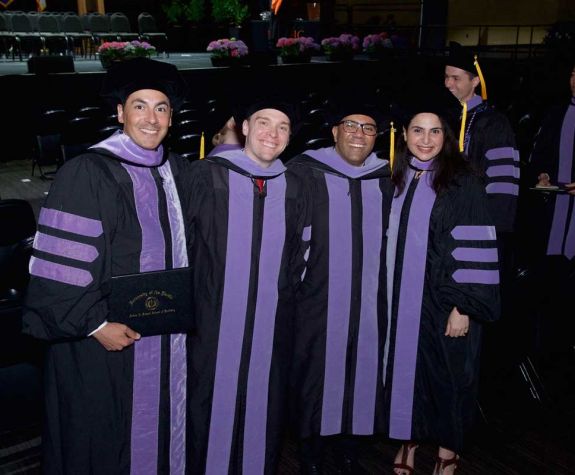
Commencement for the Dugoni School of Dentistry was held on June 15, 2025.
Message from Dean Nadershahi
Dear Class of 2025 Graduates:
I want to let you know how proud I am to have had the opportunity to share in your life and goals while you were enrolled at the University of the Pacific, Arthur A. Dugoni School of Dentistry. It was, indeed, a privilege and a pleasure to serve as your Dean and support your growth during this remarkable time in your life. The faculty and staff of the Dugoni School are also proud to have you as part of our family and welcome you into the ranks of our amazing graduates. We all look forward to seeing your impact and watching you grow in your personal and professional lives. Please stay active with your Dugoni School Alumni Association and consider volunteering or even serving on our board. If you have any questions about how to remain active as an Alumni Association member and our events, please feel free to contact our alumni office via email at dugonialumni@pacific.edu.
Our DDS, IDS, Hygiene, and Residency classes have all been a part of our 129-year history of excellence and commitment to strong values. You have built some amazing bonds with one another and have already begun creating a strong reputation as a class. It was inspiring to see you transform into confident and competent leaders in our great profession. You will create a legacy of excellence and pave the way for yourselves and all the students and residents who will follow you at the Dugoni School of Dentistry. I am so proud of each of you and the leaders you will be for our profession and school.
Please click here to view your class photo, pictures taken at commencement and other events, pdfs of the presentations made during commencement, and recording of the full commencement ceremony. To find photos taken with the dean on stage or your solo photo offstage, go to GradImages, in search, enter your last name, under School, enter University of the Pacific, 2025 for year.
On behalf of the entire Dugoni School family, I wish you success, great personal satisfaction, and happiness in your future endeavors. May your greatest expectations be fulfilled as you make choices based on your values, hopes, and dreams, and may you have all that you can imagine. Again, please stay connected with our great Alumni Association and take advantage of the Dugoni School CE opportunities, and other services like the Sterilizer Monitoring Service that will benefit you and your school as a way to stay connected. I look forward to seeing you at future alumni events and celebrating your achievements.
Thank you for being an amazing and passionate class!
Be well,
Nader A. Nadershahi, DDS, MBA, EdD
Dean and Vice Provost










